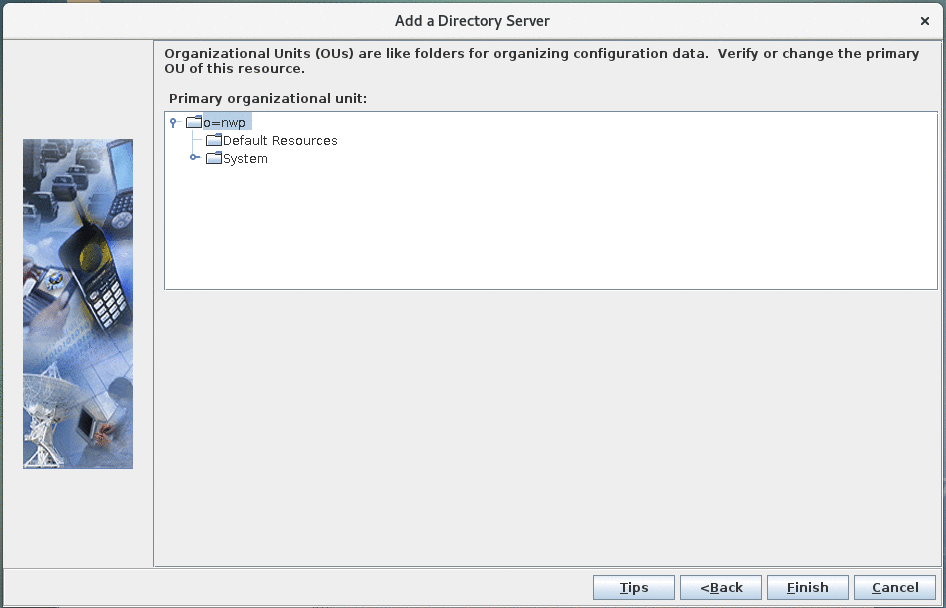Creating the authentication profile for Nomad server
The profile is used to authenticate users and to verify user access to target HCL Domino® servers.
About this task
When a user request to a server is found, SafeLinx uses the information in the authentication profile to query the requested Domino servers canonical name in the LDAP servers and use the fully-qualified domain name (FQDN) it found to establish a TCP connection.
If a server name can't be
resolved, the connection terminates. To ensure a server name can be resolved,
specify the server URL when you configure the HTTP access service.
Note: The name of the Nomad web proxy has changed to Nomad
server.
Procedure
-
From the SafeLinx Administrator, in the Tasks tab,
select :
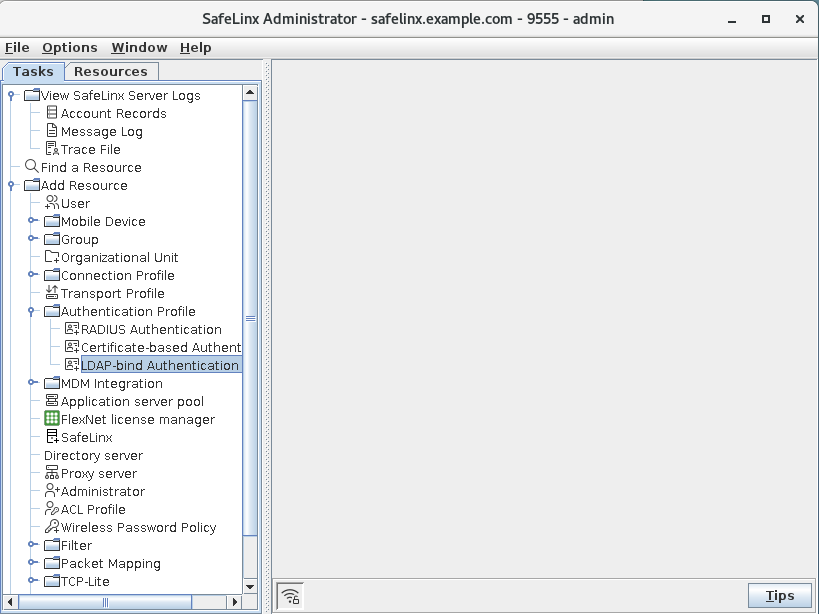
-
Define server information:
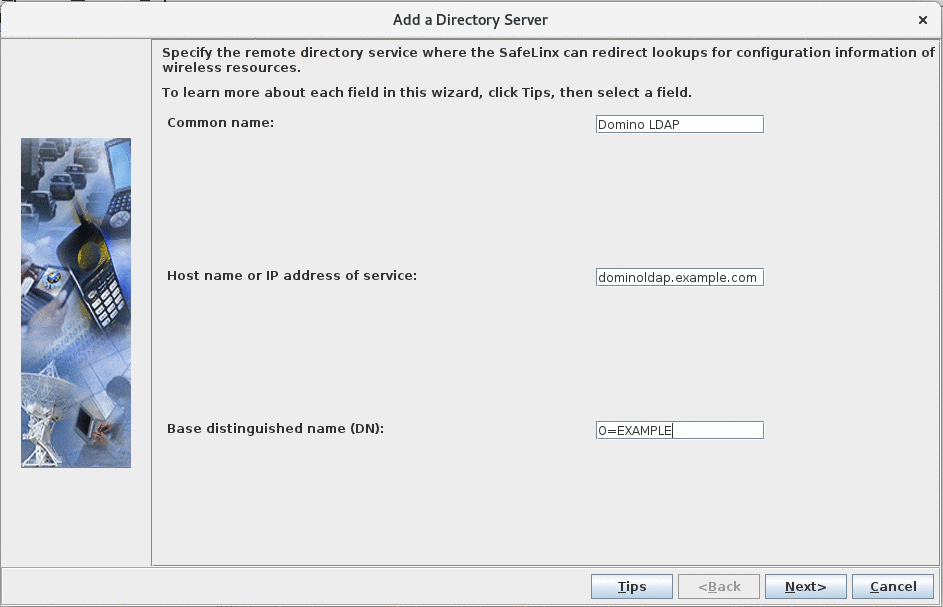
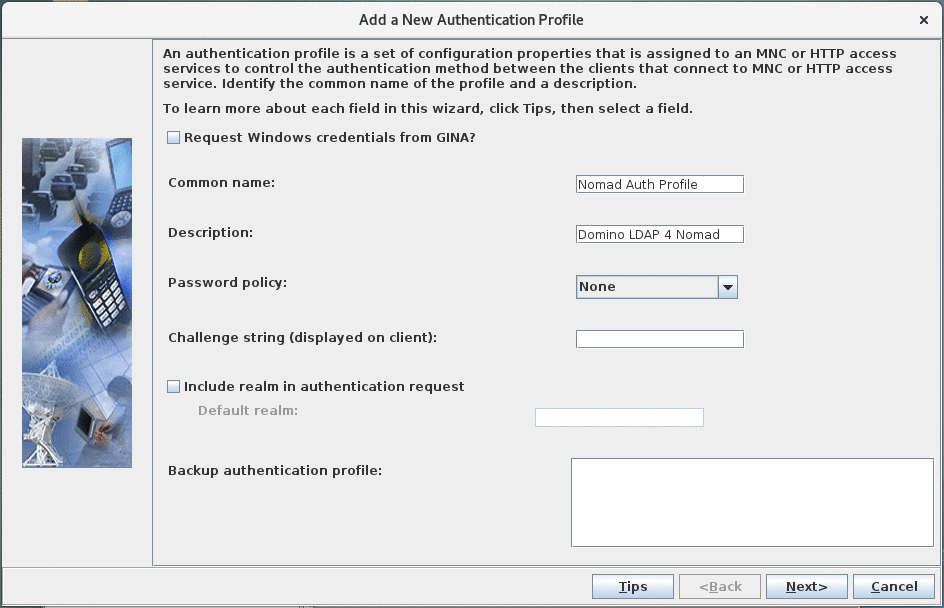
- "Request Windows credentials from GINA" has to be unchecked.
- "Common name" specifies the name of the authentication profile. Choose a descriptive name.
- "Description" can be left empty.
- Set "password policy" to "None" as we will use the LDAP server specified in the previous step to verify credentials.
- Leave "Challenge string" empty.
- Leave "Include realm in authentication request" unchecked
-
Specify directory servers:
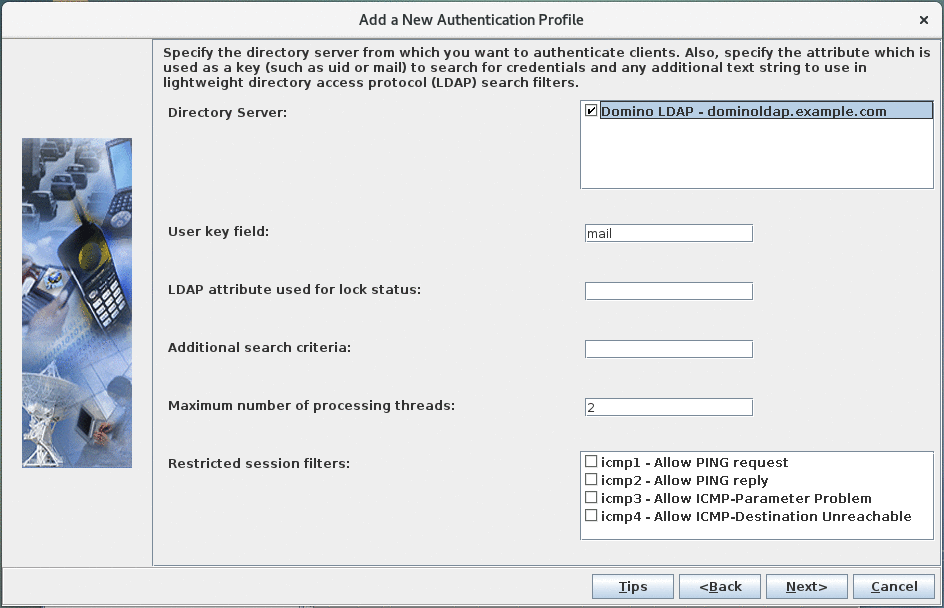 Select the "Domino LDAP" entry defined in the previous step as the "Directory Server', leave all other fields to their default value.
Select the "Domino LDAP" entry defined in the previous step as the "Directory Server', leave all other fields to their default value. -
LTPA configuration:
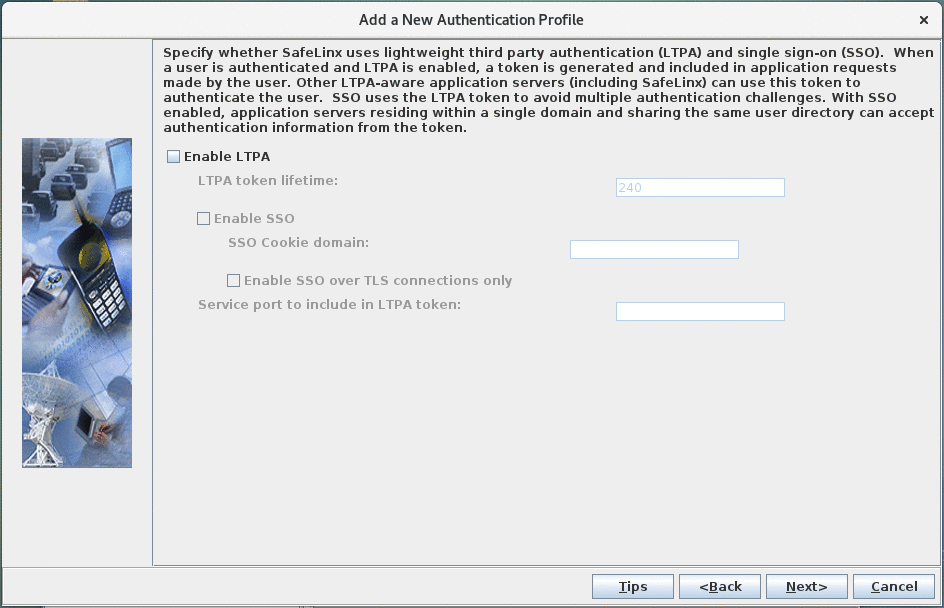 Leave the LTPA configuration disabled.
Leave the LTPA configuration disabled. -
OU verification:
